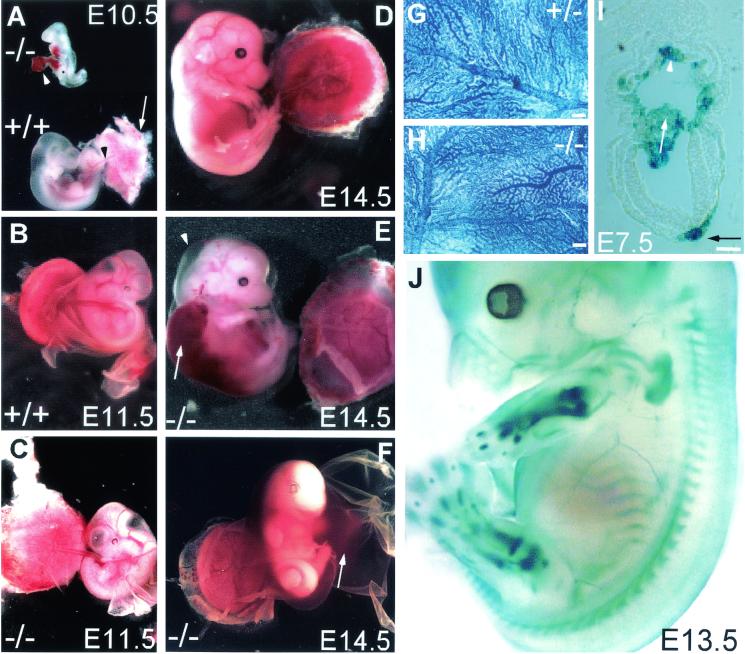FIG. 2.
Embryonic lethality in Cyr61-deficient mutants. (A) Chorioallantoic fusion occurred in WT embryos by E10.5, with the allantois (black arrowhead) attached to the placenta (white arrow). In some Cyr61−/− embryos, the allantois (white arrowhead) failed to fuse with the placenta, resulting in atrophy. (B) WT embryos at E11.5 showing successful chorioallantoic fusion and healthy placenta. (C) Some Cyr61−/− embryos at E11.5 showing successful chorioallantoic fusion but displaying vascular deficiency in the chorionic plate, resulting in a relatively pale placenta. (D) WT E14.5 embryo. (E) Cyr61−/− embryo (littermate of that shown in panel D) that developed to E14.5, exhibiting edema (arrowhead) and hemorrhage (arrow). (F) Other embryos obtained from E14.5 litters. These embryos were moribund, showing evidence of hemorrhage from the umbilical artery, filling the amnion. Vascular structure appeared normal in hematoxylin-stained yolk sacs from E10.5 Cyr61+/−(G) and Cyr61−/− (H) embryos. Bars in panels G and H, 200 μm. (I) Expression of β-galactosidase driven by the Cyr61 promoter. Expression was detected in both the chorion (white arrowhead) and the allantois (white arrow) at E7.5, when the allantois approached the chorion for eventual fusion. LacZ expression was also detected in the notochordal plate (black arrow). Bar, 10 μm. (J) Whole-mount staining of an E13.5 embryo showing LacZ expression in the sclerotomes of somites, endochondral bones (including those in fore- and hind limbs, digits, and ribs), and large arteries.

